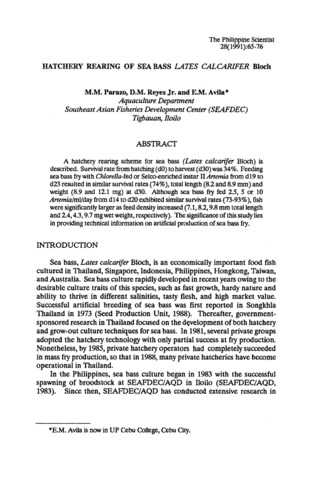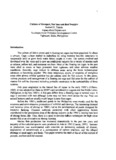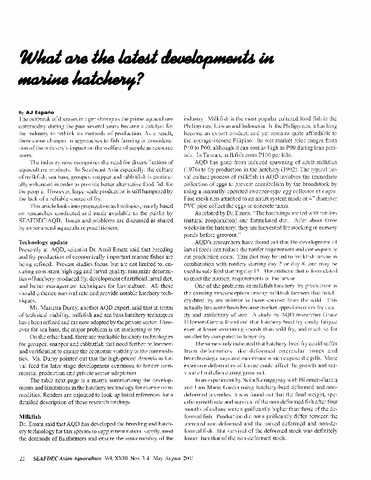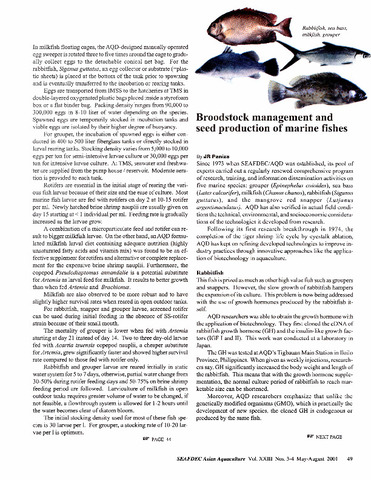Hatchery rearing of sea bass Lates calcarifer Bloch
Share
Abstract
A hatchery rearing scheme for sea bass (Lates calcarifer Bloch) is described. Survival rate from hatching (d0) to harvest (d30) was 34%. Feeding sea bass fry with Chlorella-fed or Selco-enriched instar II Artemia from d19 to d23 resulted in similar survival rates (74%), total length (8.2 and 8.9 mm) and weight (8.9 and 12.1 mg) at d30. Although sea bass fry fed 2.5, 5 or 10 Artemia/ml/day from d14 to d20 exhibited similar survival rates (73-93%), fish were significantly larger as feed density increased (7.1, 8.2, 9.8 mm total length and 2.4, 4.3, 9.7 mg wet weight, respectively). The significance of this study lies in providing technical information on artificial production of sea bass fry.
Suggested Citation
Parazo, M. M., Reyes, D. M., Jr., & Avila, E. M. (1991). Hatchery rearing of sea bass Lates calcarifer Bloch. The Philippine Scientist , 28, 65-76. http://hdl.handle.net/10862/1346
Subject
Taxonomic term
Collections
- AQD Journal Articles [1248]
Related items
Showing items related by title, author, creator and subject.
-
Culture of grouper, sea bass and red snapper
Toledo, Joebert D. (University of the Philippines Aquaculture Society, Inc., 2001)Marine fish production has increased dramatically in the past ten years and majority of the cultured species were produced in Asia in 1992. Increase in production was accompanied with concerns on increasing outbreak of ... -
What are the latest developments in marine hatchery?
Españo, A. J. (Aquaculture Department, Southeast Asian Fisheries Development Center, 2001) -
Broodstock management and seed production of marine fishes
Paniza, J. R. (Aquaculture Department, Southeast Asian Fisheries Development Center, 2001)




